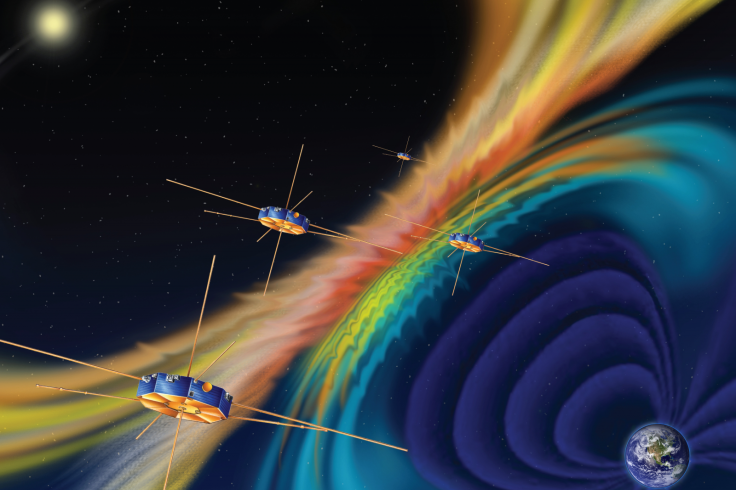Nasa places spacecraft in orbit around Earth to study magnetic field interactions

Nasa has successfully placed its four Magnetospheric Multiscale (MMS) spacecraft in an elliptical Earth orbit to begin the first space mission studying the interaction between Earth's and sun's magnetic fields.
The four identical spacecraft were launched on an unmanned Atlas rocket late on 12 March (Thursday) at 10.44 pm EDT on a billion-dollar mission.
"MMS is a crucial next step in advancing the science of magnetic reconnection – and no mission has ever observed this fundamental process with such detail," said Jeff Newmark, interim director for Nasa's Heliophysics Division at the agency's headquarters in Washington.
"The depth and detail of our knowledge is going to grow by leaps and bounds, in ways that no one can yet predict."
Magnetic reconnection which sees the two magnetic fields come together and break apart in a continuing process releases vast amounts of energy and is the catalyst for some of the most powerful explosions in our solar system.
The bursts of energy can reach the order of billions of megatons of trinitrotoluene (TNT) and can send particles surging through space at near speed of light.
Avoiding GPS disruption
These powerful events can disrupt modern technological systems such as communications networks, GPS navigation and electrical power grids. The data from the spacecraft is expected to throw light on how to avoid such disruption.
Scientists also hope to understand the process elsewhere, such as in the atmosphere of the sun and other stars, in the vicinity of black holes and neutron stars, and at the boundary between our solar system's heliosphere and interstellar space.
The orbit of the four craft stretches thousands of kilometres into the magnetosphere almost going half the distance to the moon taking them into regions of reconnection activity.
The spacecraft will fly in pyramid formation, between 10 km and 400 km apart, to provide 3-D views of magnetic reconnection on the smallest of scales.
Observations are expected to begin in early September.
Each observatory measures more than 11 feet across and 4 feet high, and weighs 1,360 kilograms each.
"They're all healthy and turned on. Essentially, we're all green and headed into our mission," said Nasa project manager Craig Tooley.
© Copyright IBTimes 2025. All rights reserved.





















